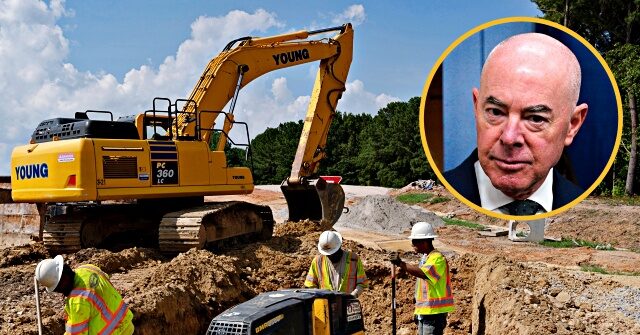Under the Biden administration, the Department of Homeland Security (DHS) plans to introduce an additional 65,000 H-2B foreign visa workers to fill blue-collar positions in various industries, such as construction, meatpacking, and landscaping. This decision comes as many American workers are increasingly losing job opportunities to an inflow of migrant labor. The announcement was made shortly after the presidential election, highlighting the administration’s stance on immigration and labor. Currently, the program allows for the import of 66,000 H-2B workers annually, a cap that has often been raised by previous administrations to meet the demands of American businesses.
DHS Secretary Alejandro Mayorkas justified the expansion of the H-2B visa program by stating its dual purpose: to meet the labor demands of employers and to keep consumer prices in check. By bringing in foreign labor, the administration aims to prevent wage inflation, which can occur if businesses struggle to source sufficient local labor. Mayorkas emphasized the importance of maximizing the use of the H-2B program, asserting that it serves to bolster worker protections while also acting as a deterrent against irregular migration to the U.S.
A significant portion of the newly available H-2B visas—approximately 20,000—will be allocated specifically for workers from Central and South American countries, including Guatemala, El Salvador, Honduras, Haiti, Colombia, Ecuador, and Costa Rica. The remaining visas will largely target foreign workers who have previously entered the U.S. under the H-2B program. This strategy indicates a focus on replenishing the labor force with individuals who have existing ties or experience within the American job market.
Critics argue that the H-2B visa program is plagued by instances of exploitation and abuse. By increasing the number of foreign workers in the labor market, the administration risks exacerbating the challenges faced by American workers, especially as statistics show a concerning trend: native-born American workers have lost around 800,000 jobs in the past year. In contrast, foreign-born workers have gained over a million jobs, showcasing a significant shift in job acquisition that favors migrants over native citizens.
Moreover, current labor statistics reveal that native-born Americans still occupy fewer positions compared to pre-pandemic levels, suggesting that all net job growth has been absorbed by foreign workers. This situation raises questions about the long-term implications of such immigration policies on the American workforce and overall economy. As the administration continues to promote the influx of migrant labor, many American nationals are left wondering about their prospects in the wake of these changes.
In summary, while the Biden administration defends its expansion of the H-2B visa program as a necessary step for both businesses and consumers, the contrasting statistics regarding job acquisition among native-born versus foreign-born workers paint a more complex picture. As the labor market continues to evolve, this approach may spark further debates about immigration, worker rights, and job availability for American citizens.

